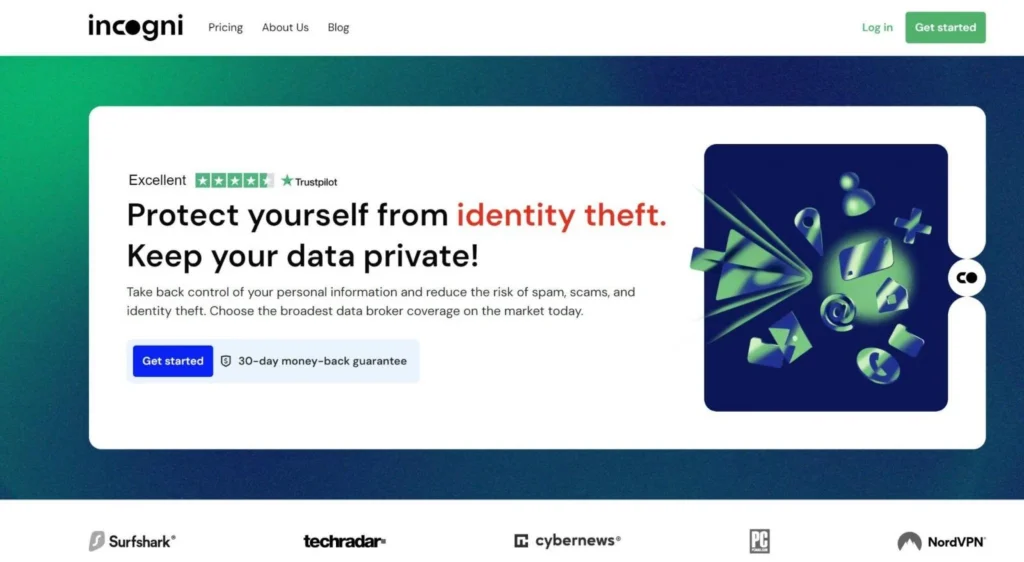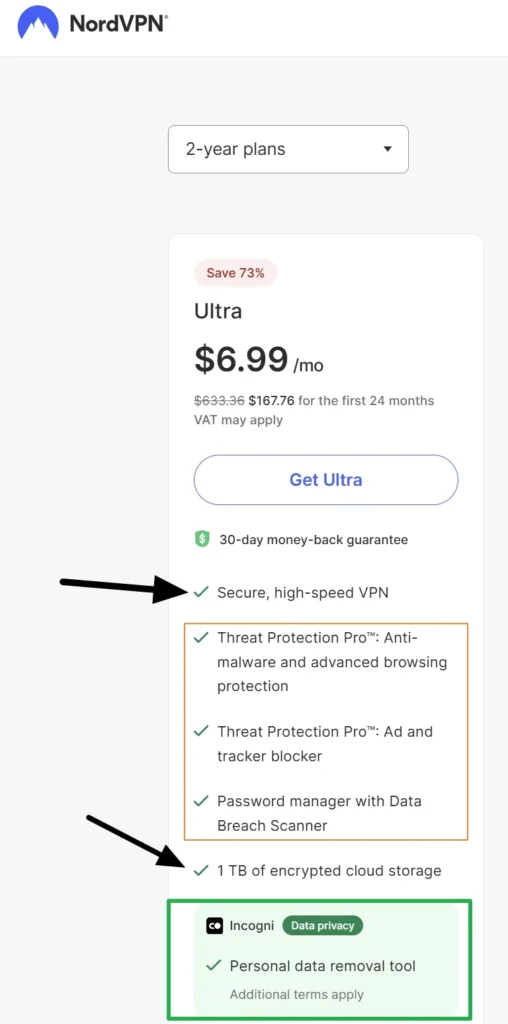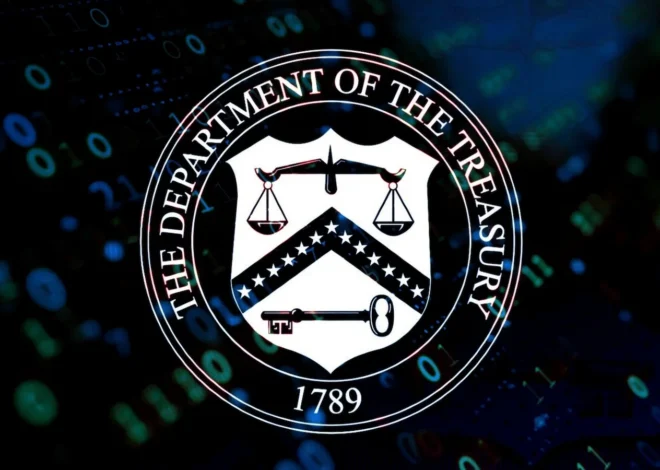
How to remove yourself from the internet
Want to prevent people from harvesting your personal information? Keep reading to learn how to remove your data from people search sites.
Protecting your digital footprint is crucial if you want to prevent phishing, scams, and other unwanted side effects caused by online data harvesting. Every day, people around the globe suffer from identity theft, fraud, and cyberstalking. These cybercrimes have become a part of daily life because of the amount of personal data that is available online. So, how do you remove yourself from the internet?
If you want to protect your online privacy, you have come to the right place. This guide will uncover the best practices for reducing your digital footprint, preventing identity theft, and avoiding unwanted data harvesting.
Below, we’ll share the best methods for removing yourself from data brokers and people search sites. We will not only explain the process for manual removal but also recommend the best services for ensuring your data is removed permanently.
Keep reading to learn why data brokers are dangerous, and why it is critical to remove yourself from the internet. To cover all bases, we will list every technique and method you can use to improve your digital privacy and prevent online tracking that leads to data harvesting and data theft.
Remove yourself from the web – Overview
In this guide, we’ll cover:
- The best services for removing your data from brokers and people search sites.
- Why Incogni is the best tool for automated data removal.
- Step-by-step instructions for manual data removal.
- Proactive measures to minimize your digital footprint.
- Best practices for minimizing data collection online
- FAQs to address common privacy concerns.
Why should you remove your data from the internet?
Your personal information is constantly being collected and sold by data brokers, people search sites, social media platforms, and even the apps and services you use. This personally identifiable information (PII) is often used for legal (but highly invasive) purposes, such as profiling and marketing.
Unfortunately, once it appears online, your data could be exploited to engage in phishing attacks, scams, identity theft, or to allow someone unwanted to contact you (this can include cyberstalking or simply being contacted by a family member, ex-partner, or friend whom you prefer not to have your contact details).
The more information you remove from the web, the harder it becomes for malicious actors to misuse your data. This reduces the likelihood of being victimized by cybercriminals. It can also improve your eligibility for insurance, housing, job opportunities, and more.
Is it legal for data brokers and people search sites to sell my data?
Unfortunately, the answer is yes. Data brokers and people search sites are legally allowed to compile publicly available information. This legality stems from the fact that the data is already “public” somewhere. This means it can be found elsewhere and is legally accessible to companies who want to compile and sell it.
The real issue is the current legal framework, which fails to distinguish between scattered personal information that is difficult for individuals to locate and centralized databases that compile this data from thousands of sources.
These databases make it far easier for others to access your personal information and there are no limitations on who can purchase access to that data. This means that cybercriminals, scammers, stalkers, attorneys, and anybody else who wants your data can purchase your PII without even providing a reason.
Data brokers and people search sites gather your data from the following sources:
- Social media profiles (e.g., Facebook, Twitter, LinkedIn)
- Blogs and personal websites
- Public forums and discussion boards
- Public records (e.g., voter registration, property records, court documents)
- Government databases (e.g., DMV records, business registrations)
- Court records and legal filings
- Public government meeting minutes and agendas
- Professional licensing boards
- Company filings and employment records
- Job posting websites and professional networking platforms
- Business websites and online portfolios
- Online directories (e.g., Whitepages, Yellowpages)
- Phone books and contact aggregators
- Data broker partnerships and exchanges
- Marketing lists and online surveys
- E-commerce websites and customer reviews
- Utility records and service providers
- Real estate listing websites
- Property sales and mortgage records
- Financial records accessible to the public
- News articles and press releases
- Obituaries and genealogy websites
- Educational institutions and alumni directories
- Health provider directories
- Vehicle licensing databases
- Charity and nonprofit donor lists.
As you can see, the number of places data brokers can legally collect personal data from is quite staggering. Removing your data from all these sources is extremely difficult. This is why it is better to concentrate on:
a) Preventing data from appearing in those places in the first place.
b) Removing data from data brokers that compile your info from all of these sources.
In this guide, we’ve provided tips and tricks to implement both of these important techniques.
What is the best way to remove yourself from the internet?
The easiest and best way to remove yourself from the internet is to use a dedicated data removal service. There are various consumer-facing data removal services currently available on the market, and although they all work, there is one that stands out from the crowd for reliability and value for money.
Below, we have listed our favorite data removal services:
1. Incogni
- Removes data from 180+ brokers: This includes removal from dangerous sites like Intelius, CheckPeople, PublicDataUSA, MyLife, FamilyTreeNow, Instant CheckMate, Radaris, Spokeo, and Whitepages.
- Continuously monitors to ensure your data isn’t re-added: If it finds your data it asks for it to be removed again.
- Comes with a handy dashboard: This gives you complete visibility over all your removal requests.
- It is currently available for $7.49/month: You can get this reliable data removal service with a 50% discount for our readers. Simply follow our link to subscribe for half price!
2. DeleteMe
- Covers over 700 sites: This remains a standout feature, ensuring that a vast range of data brokers and people search sites are included.
- Provides regular reports on removal progress: DeleteMe sends detailed, periodic updates showing where your data has been removed and which requests are still in progress, offering full transparency.
- Ideal for users with photos or specific requests for removal: DeleteMe specializes in handling sensitive personal data like photos, phone numbers, and addresses, making it suitable for individuals with unique privacy concerns.
- Costs around $11 per month, which is a touch pricey: This price applies to the annual plan ($129 per year). While higher than some alternatives, the extensive coverage justifies the cost for many users.
- Has various tiers, which can be confusing and require you to upgrade for optimal data removal: DeleteMe offers options for single users and families. Adding family members can increase costs significantly, making it important to carefully select the right plan.
- US-centric removals: Coverage extends internationally, but is most effective for data removal from US-based data brokers.
3. Privacy Bee
- Removes data and offers tracking prevention tools: Privacy Bee stands out for providing both data removal services and browser-level tools to block trackers and unwanted ads.
- Includes continuous scans for data breaches: This feature ensures that users are alerted when their personal information is exposed in breaches, adding another layer of security.
- Costs $16.40 per month, which is very expensive: Privacy Bee is one of the pricier options on the market, making it less attractive for users on a budget.
Why should you use Incogni to remove your data online?
Incogni is a privacy tool designed by the company behind the best consumer-facing VPN on the market, NordVPN. The service is dedicated to removing your personal information from data brokers and people search sites.
The best thing about Incogni? It offers data removal from over 180 websites at a genuinely affordable rate. Plus, it automates everything to ensure you stay removed from all those databases for as long as you have an account.

Robust identity theft protection
Incogni scans a wide range of people search sites, targeting the most prominent platforms to ensure your personal information is removed. By doing so, it safeguards you from potential threats like stalkers, scammers, hackers, cybercriminals, and other malicious actors.
Using Incogni reduces the likelihood of your personal details being misused or sold to malicious third parties. This has been proven to significantly lower your risk of identity theft and fraud.
Ongoing data monitoring
Data brokers don’t give up easily. They know that the law plays into their hands which is why they never really delete your data. Instead, they put your data on ice and keep it set aside for a later date.
After a few months, when they have plausible deniability, they will re-add your data to their database to start profiting again. If you complain, the broker will claim that they require your data. This creates the perfect loophole for data brokers to keep profiting from your data without your permission, against your wishes, and at great risk to your personal safety.
Unfortunately, legislators have yet to pass laws that prevent this from happening, so the onus is on individuals to keep requesting for their data to be removed.
That’s where Incogni comes in. It doesn’t just remove your data once and stop there; it actively keeps watch to ensure your information isn’t re-added. If any broker tries to re-list your data, Incogni takes swift action to remove it again, with continuous monitoring to give you ongoing peace of mind.
Data removal without the effort
Manually removing your information from 180+ sites is possible, but it would take hundreds of hours – impractical for most people. Incogni simplifies this process by automating your data requests.
Its user-friendly system not only saves you time but also ensures that your data is continuously monitored. During my time testing the service, I enjoyed the detailed reports that Incogni provided in my dashboard. This gave me full transparency over where my data was found and how my data removal request was being processed.
Affordable identity protection
Many data removal services charge the earth, which can be off-putting for home users. Public figures or wealthy influencers don’t mind forking out to have their contact details info scrubbed from the web. Ordinary people have other priorities, which is why they need an effective data removal service at a fair price point.
Incogni caters to this cross-section of people by offering effective removal at an affordable rate. Currently, Incogni is available to our readers at an exclusive discounted rate of $7.49 per month.

Alternatively, you can get Incogni bolted onto a NordVPN subscription. This reduces the cost to $6.99 per month as long as you commit for two years. For this price, you get unlimited use of the VPN, 1 TB of secure cloud storage, a password manager, DNS-based ad and tracker blocking, and full access to Incogni data removal.
In our opinion, this is an absolute bargain because NordVPN is our favorite VPN.

Can I remove my data from the internet manually?
Yes, you can manually request the removal of your personal data from the internet. This involves contacting data brokers, people search sites, individual companies, and even search engines like Google to ask for your data to be removed.
The process can be time-consuming and requires persistence, but laws like the General Data Protection Regulation (GDPR) in the EU and the California Consumer Privacy Act (CCPA) in the US provide legal frameworks that support such requests. These laws allow individuals to:
- Request corrections (data rectification) for inaccurate information.
- Request deletions (the right to be forgotten) to have their personal data removed from certain platforms.
The good news is that nowadays there are companies that work on behalf of individuals who want to remove their data from data brokers. This provides the opportunity for professionals and influencers – and anybody concerned with their privacy – to remove their data from data brokers without spending hundreds of hours each year making removal requests.
Limitations of the ‘right to be forgotten’
Your ability to invoke the right to be forgotten – to have your data deleted from websites or online services – depends on specific circumstances and regional regulations.
If your information is required for transparency and accountability, to promote public understanding, or to safeguard democratic processes, you may not be able to conceal your information from the web.
Here are some important things to keep in mind:
- Public interest exceptions: If the information serves a public interest, your removal request may be denied. For example, individuals with criminal convictions or public roles may not be allowed to request the deletion of their information from news sites or search engine results.
- Jurisdictional differences: GDPR applies within the EU, while laws like CCPA only cover California residents. Outside these jurisdictions, your right to remove data from specific websites may be limited. However, you should still be able to request for your data to be removed from data brokers and people finder sites that have compiled your info.
- Ongoing monitoring: Even after successfully requesting data removal, your information may reappear. Unfortunately, data brokers are allowed to re-harvest publicly available information. This creates a loophole that means people search sites can re-add your data after just a few months. As a result, you will need to monitor data brokers regularly and repeat the process of requesting removal. Failing to do this will mean your data reappears for sale.
How do I remove my data from the internet manually?
Using a data removal service is faster and more effective than performing manual data removal requests. It also ensures that your data stays off these websites permanently.
There are more than 180 well-known data brokers and people finder sites in the USA alone. These sites can only make money if they list your data in their database, which is why they will try to re-add you as quickly as possible.
According to research carried out by Incogni, asking to be removed from all these websites could take you more than 304 hours. Now, consider that you may need to repeat the process twice or three times each year. For most people, this is not feasible, which is why data removal services are becoming popular.
If you don’t want to pay for a professional data removal service, manual removals are still possible. For example, if you know your data is appearing in a specific people search site, such as Radaris, Instant Checkmate, CocoFinder, or WhitePages, you can follow the steps below to remove your data:
How to manually remove your data from the internet:
- Find which sites are publishing your records: You can search for your name in Google and other search engines. We also recommend checking leading people search sites (like Spokeo, Whitepages, Radaris) to see if they have an accurate profile about you.
- Contact websites and platforms: You can email or use opt-out forms to ask data broker websites to remove you. Alternatively, you can sign up for Incogni to have them automate the process. If other websites or businesses are publishing your data, you can contact them directly (including by emailing their legal team) to request deletion.
- Use Google’s Remove Outdated Content tool: This lets you request the deletion of outdated links. You can also use it to ask for sensitive information, such as your phone number or address, to be removed under Google’s personal information removal policy.
- Invoke your legal rights: If you’re in a jurisdiction with GDPR or CCPA protections, you can file formal data removal requests with any business or website that holds your data. Your rights include the ability to ask to see what data a company holds about you, to ask whether there is a legal basis for holding your data, and to request for your data to be modified or deleted.
- Monitor and repeat: Regularly search for your information to ensure it hasn’t been re-added to databases. If it has, ask for it to be removed again.
Manual data removal – additional steps
Besides requesting for your data to be removed from people search sites, there are other best practices you can use to clean up your digital footprint. These methods of manual data removal will help prevent your data from being sold to marketing companies or compiled by unwanted websites.
Delete old accounts
Start by using your email account to identify any messages from services you no longer use or checking saved password lists (such as those in your Chrome browser or a password manager if you have one). Once you have a list of old accounts you no longer use, you can go ahead and close them down for good.
Deleting or deactivating old accounts prevents them from becoming a target for hackers and stops them from being leveraged to harvest your personal data. If deletion isn’t an option, replace your account details with false details or generic information that will not affect you personally if it is collected by unwanted third parties.
Adjust your social media privacy settings
It is crucial to update your social media privacy settings to control who can view your information. Start by setting your profiles to private to limit visibility to trusted connections. Remove old posts that may contain sensitive information, remove any unnecessary contacts you no longer interact with, and unlink third-party apps (especially any that you don’t recognize). These steps will reduce your digital footprint and minimize your exposure to data scraping.
Request website owners remove your information
If a specific website is hosting or publishing your personal information, contact the site owners directly and politely request it to be removed. Be clear about what information you want removed and why. For cached versions of the data that may still appear in search results, use tools like Google’s URL removal request to clear outdated information.
Remove data from internet archives
If archived versions of your personal information appear in the Wayback Machine, use the Internet Archive’s contact form to request the removal of those snapshots. Archived data can linger even after the original content is deleted, so it is vital to consider if highly sensitive personal information (that you manage to delete elsewhere) still appears in archives.
How can I stop my data from being added to data brokers?
The hard fact is that data brokers collect data from hundreds if not thousands of different sources. This can make it hard to completely avoid being added to these databases. That said, we recommend that you always use a VPN to stem the flow of personal data to ISPs, public WiFi networks, and other unwanted third parties.
A VPN helps prevent new data from being collected, which helps you reclaim your digital privacy. You can double down further by using privacy-enabling browser extensions like uBlock Origin, Privacy Badger, NoScript, and AdBlock Plus.
Other ways to improve your digital footprint include:
- Closing old accounts
- Deleting apps you don’t use
- Checking app permissions and being careful about the ones you install
- Limiting the amount of data you provide to public forums and social media sites.
This holistic approach to online privacy will help protect your identity and prevent scammers from targeting you.
With its automated features, continuous monitoring, and cost-effective pricing, Incogni is the easiest way to minimize your digital footprint and reduce the risk of identity theft. However, it is still important to pair it with a VPN and other OpSec practices.
What are the best privacy-enhancing tools and practices?
If you want to clean up your digital footprint, you will need to be more mindful about the tools you use and the data you share. Using a VPN is crucial. A VPN encrypts your internet connection and conceals your IP address. This prevents the websites you visit from tracing your IP address. It also stops local networks, ISPs, government agencies, and other eavesdroppers from monitoring your activities online.
Another crucial step is to limit tracking by installing ad blockers and anti-tracking browser extensions. These tools help prevent websites from collecting unnecessary data about your browsing habits. They also help minimize the amount of tracking data that websites share as you surf the web.
It’s important to minimize data sharing by using disposable or fake email addresses and phone numbers whenever possible. This helps keep your real contact information private and reduces the risk of spam or identity theft.
Practicing digital minimalism is another powerful strategy. Avoid signing up for services or accounts that you don’t genuinely need (faddy apps often have highly invasive permissions, and even apparently basic apps like a flashlight app may siphon off your data if you accept the permissions). If you do sign up for a new service, don’t link it to an existing account such as Google or Facebook, as this enables data sharing between those platforms.
Finally, prioritize your communication privacy by using encrypted messaging apps like Signal or Telegram. These apps offer end-to-end encryption, ensuring that your conversations are always secure and private.
What are some proactive measures to prevent data collection?
- Avoid sharing personal data online: Refrain from oversharing on social media.
- Use a Google Voice number: Avoid sharing your real phone number.
- Use a password manager: This will help you to secure your accounts with unique, strong passwords.
- Remove yourself from people search sites: Follow opt-out procedures for major brokers.
- Stop installing dodgy apps: Consider apps carefully and don’t install faddy apps with invasive permissions.
- Close down old accounts you no longer use: This reduces your exposure to hackers and reduces the number of places that data brokers can use to find info about you.
Remove yourself from the internet – FAQs
Can I delete myself completely from the internet?
While you can significantly reduce your digital footprint, it’s incredibly hard to remove yourself entirely due to legal and publicly accessible records.
How does a VPN help protect my privacy online?
A VPN encrypts your internet traffic, hides your IP address, and prevents ISPs from tracking your activity. It also stops local networks, such as public WiFi hotspots, school networks, work networks, and even home networks from being able to detect the websites you visit.
What’s the difference between Incogni and DeleteMe?
Incogni focuses on automated removal with monitoring, while DeleteMe offers more customization, many different data removal tiers, and higher costs.
How often should I check for re-added data?
Data brokers typically re-add data after six months, but there have been cases of people being re-added sooner. This is why it is essential to constantly monitor data brokers to check if your data has reappeared for sale.
By following the steps outlined in this guide, you’ll be well on your way to safeguarding your online presence. Whether you choose manual methods or a trusted service like Incogni, taking action now can protect your privacy in the long term.



